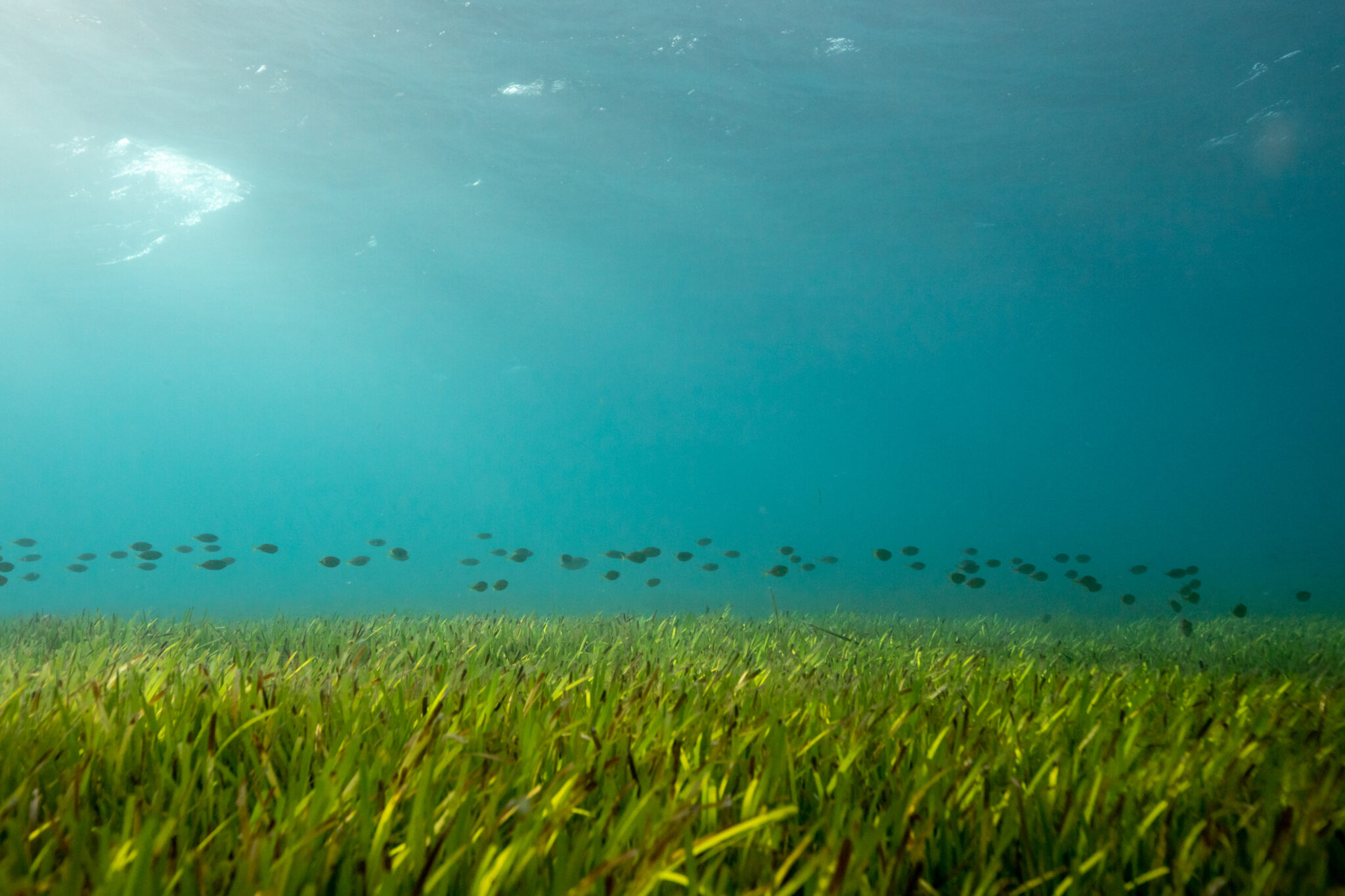
Environment /
Seagrasses are often referred to as ‘the lungs of the sea’ because of the crucial role they play in generating oxygen for the planet. They photosynthesise and release oxygen in the same way as plants found on land, and do so at an impressive rate – for every one square metre of seagrass, around 10 litres of oxygen is produced on a daily basis. You can find these underwater gardens in shallow waters across every continent except for Antarctica. They usually live around 1-3 metres below sea level, however some can grow at depths of up to 58 metres.
Aside from producing oxygen, sea meadows work in many ways to benefit the planet both above and below sea level. A key factor is their absorption of carbon dioxide, helping to reduce greenhouse gas emissions which contributes to lessening the risks associated with climate change. They also help to maintain healthy coral reefs in several ways, such as by reducing the acidity of sea water which in turn protects the reefs from degradation. These productive plants work as filtering systems for coastal waters, helping to keep them clean by soaking up nutrients and bacteria. They also provide coastal defence against rising sea levels and erosion by stabilising sediment and reducing wave and tidal energy.

The meadows also provide a habitat and food for marine life, many of which rely on the dense canopies as their main source of nutrition. Sea turtles are often found grazing among the blades of grass and consume up to 2kg of them per day, and they are the primary habitat for the endangered dugong. Humans benefit from and depend on this ecosystem in so many ways; they keep our coastal waters clean, stabilise the climate, regulate ocean environments and of course, as nursery habitats for a rich diversity of fish, have a large impact on food supply and livelihoods. Seagrasses have even been used by humans as a natural fertiliser for crops, to insulate homes and make woven furniture.
Both climate change and direct human intervention has caused a drastic decline in ocean meadows. These include coastal urban developments, industrial activities that cause water pollution, fishing activities and aquaculture. According to Project Seagrass, a marine conservation charity, we’ve lost over 35% of the world’s seagrass meadows over the last 40 years. While warming sea temperatures have a role to play, human pollution is the biggest culprit in multiple ways. Boating activity, for example, stirs up sediment from the seabed which interferes with light levels and therefore the photosynthesis required for the plants to grow. Boat propellers, trawlers’ nets and dredging can also directly damage the leaves, stems and roots. Destroying them leads to dangerous imbalances in our oceans, threatens marine biodiversity, and disrupts the natural preservation of our underwater environments.
Coastal areas are home to some of the richest and most fragile ecosystems on earth, but they are also some of the most under threat communities in the midst of the climate crisis. Conservation and restoration of the sea meadows is vital in order to improve the health of our planet on local and global scales. Unfortunately, as many do not see or understand the value of these incredible plants, they are inadvertently contributing to their decline.

Runoff pollution from land fertilisers, construction sites and drains as well as harmful fishing practices need to be regulated and monitored. Restoration is also carried out in many parts of the world, where seagrass beds are being repopulated with seedlings or transplanted plants which are in a healthier condition. However for these efforts to be optimised, the root causes of the damage which occurs in the first place needs to be addressed and acted upon. Most preservation methods focus on maintaining their biodiversity, but because there is no overruling international legislation dedicated to the protection of ocean meadows, their future is pretty much dependent on local and regional governing bodies or agencies, which vary around the world.
Agencies such as UK-based Project Seagrass are helping to raise awareness, provide coastal and non-coastal communities alike with vital information and work towards garnering the attention and help of people around the world by partnering with national governments, public and private institutions and NGOs. Other inspiring organisations worth looking into are Dugong & Seagrass Conservation Project and Seagrass Watch. There are several ways you can play an active role in conservation, such as joining a marine conservation programme do advocate for their work within your own community, donate towards field research, take part in awareness campaigns, ‘adopt a patch’ of seagrass and visit these amazing ocean meadows yourself on your next holiday – you’ll probably find one a lot closer than you think.